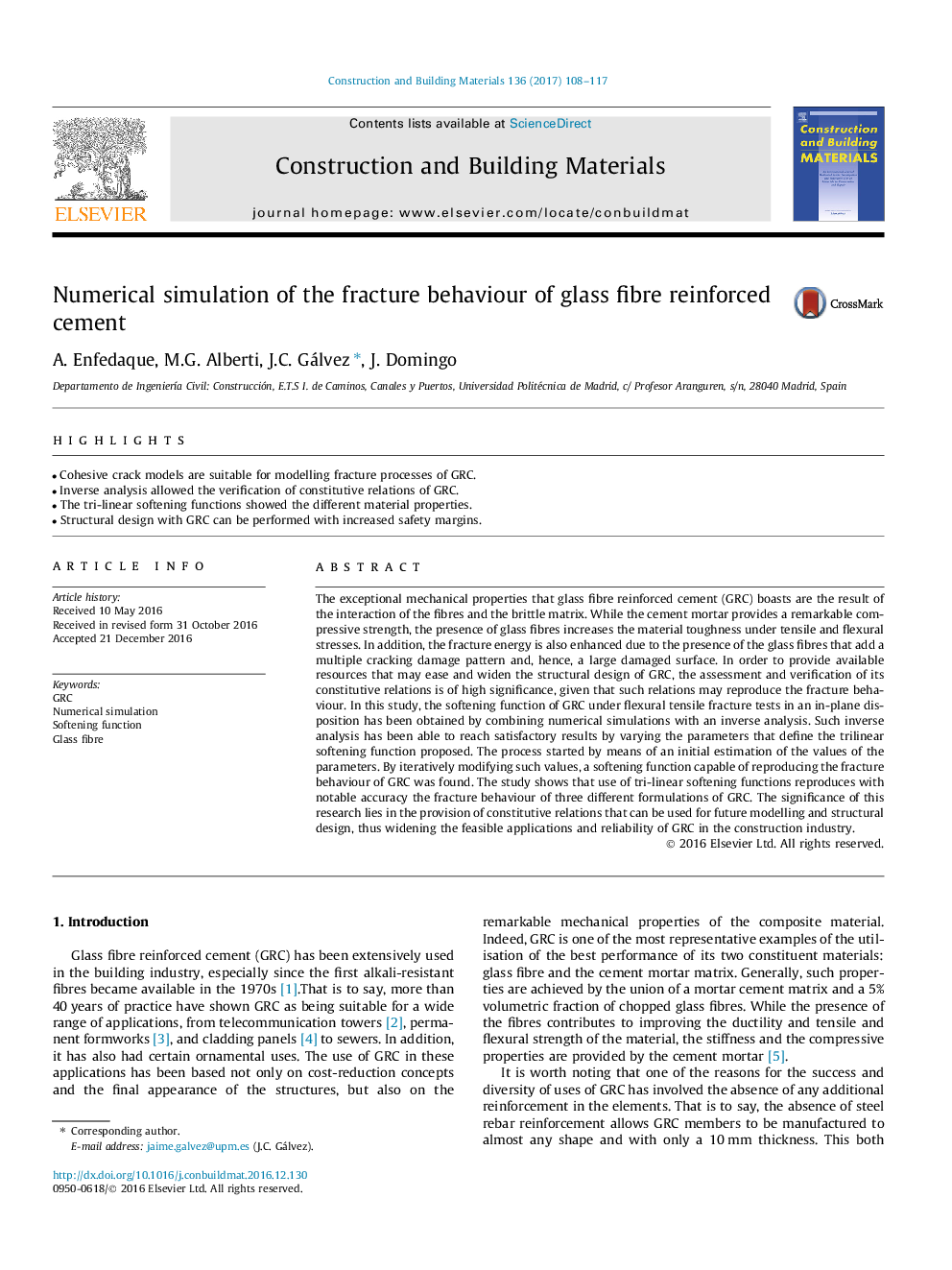| Article ID | Journal | Published Year | Pages | File Type |
|---|---|---|---|---|
| 4918526 | Construction and Building Materials | 2017 | 10 Pages |
Abstract
The exceptional mechanical properties that glass fibre reinforced cement (GRC) boasts are the result of the interaction of the fibres and the brittle matrix. While the cement mortar provides a remarkable compressive strength, the presence of glass fibres increases the material toughness under tensile and flexural stresses. In addition, the fracture energy is also enhanced due to the presence of the glass fibres that add a multiple cracking damage pattern and, hence, a large damaged surface. In order to provide available resources that may ease and widen the structural design of GRC, the assessment and verification of its constitutive relations is of high significance, given that such relations may reproduce the fracture behaviour. In this study, the softening function of GRC under flexural tensile fracture tests in an in-plane disposition has been obtained by combining numerical simulations with an inverse analysis. Such inverse analysis has been able to reach satisfactory results by varying the parameters that define the trilinear softening function proposed. The process started by means of an initial estimation of the values of the parameters. By iteratively modifying such values, a softening function capable of reproducing the fracture behaviour of GRC was found. The study shows that use of tri-linear softening functions reproduces with notable accuracy the fracture behaviour of three different formulations of GRC. The significance of this research lies in the provision of constitutive relations that can be used for future modelling and structural design, thus widening the feasible applications and reliability of GRC in the construction industry.
Related Topics
Physical Sciences and Engineering
Engineering
Civil and Structural Engineering
Authors
A. Enfedaque, M.G. Alberti, J.C. Gálvez, J. Domingo,
